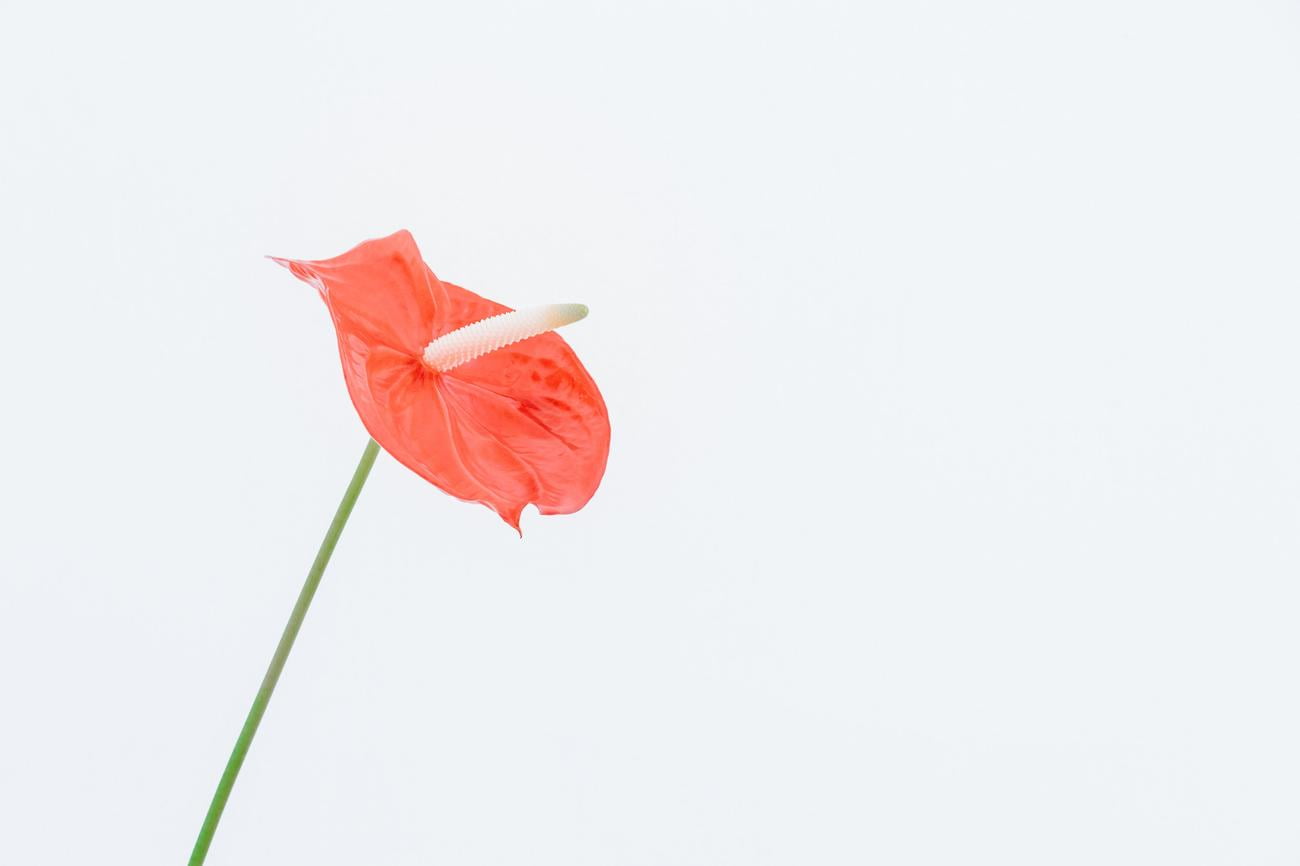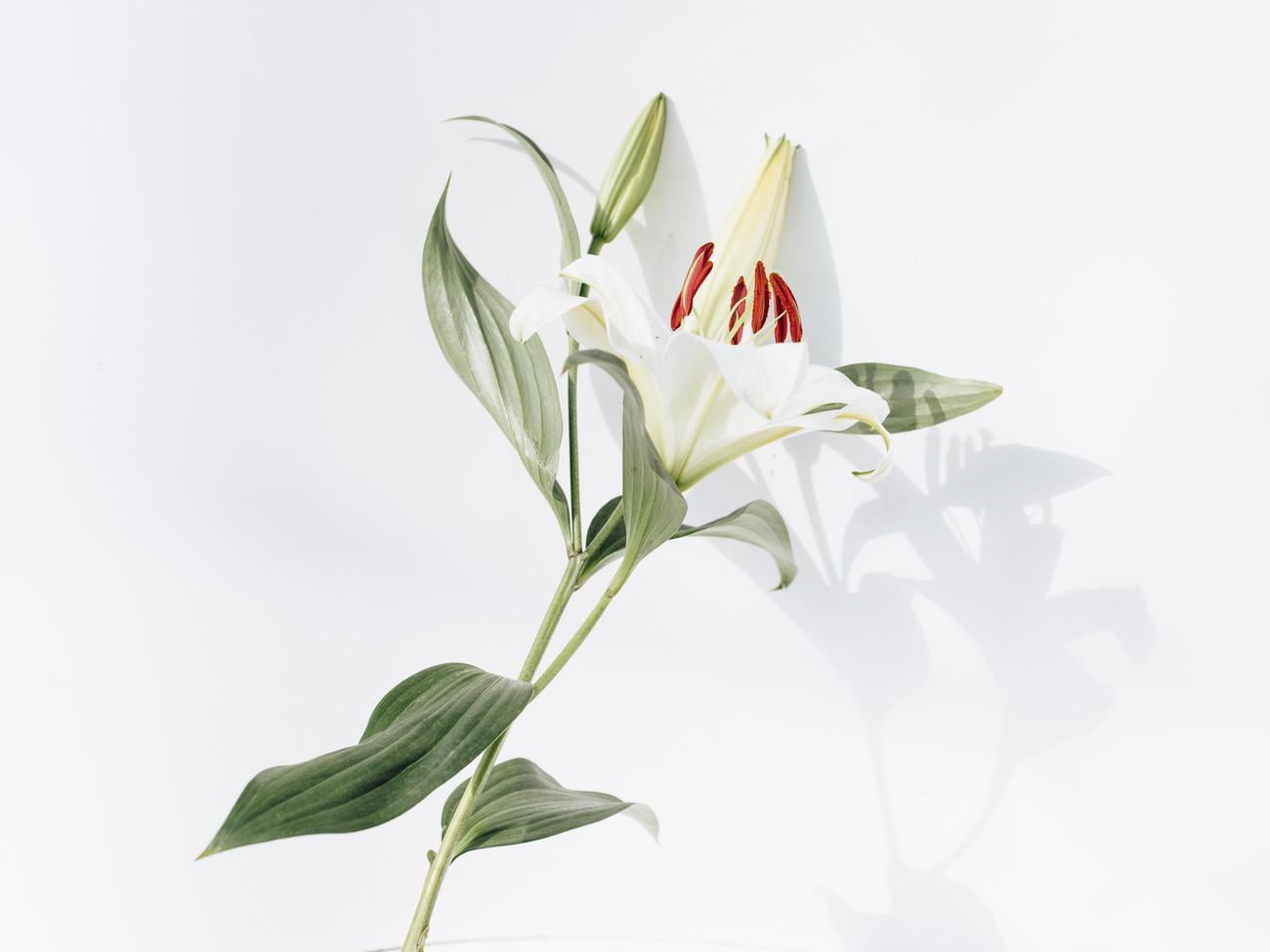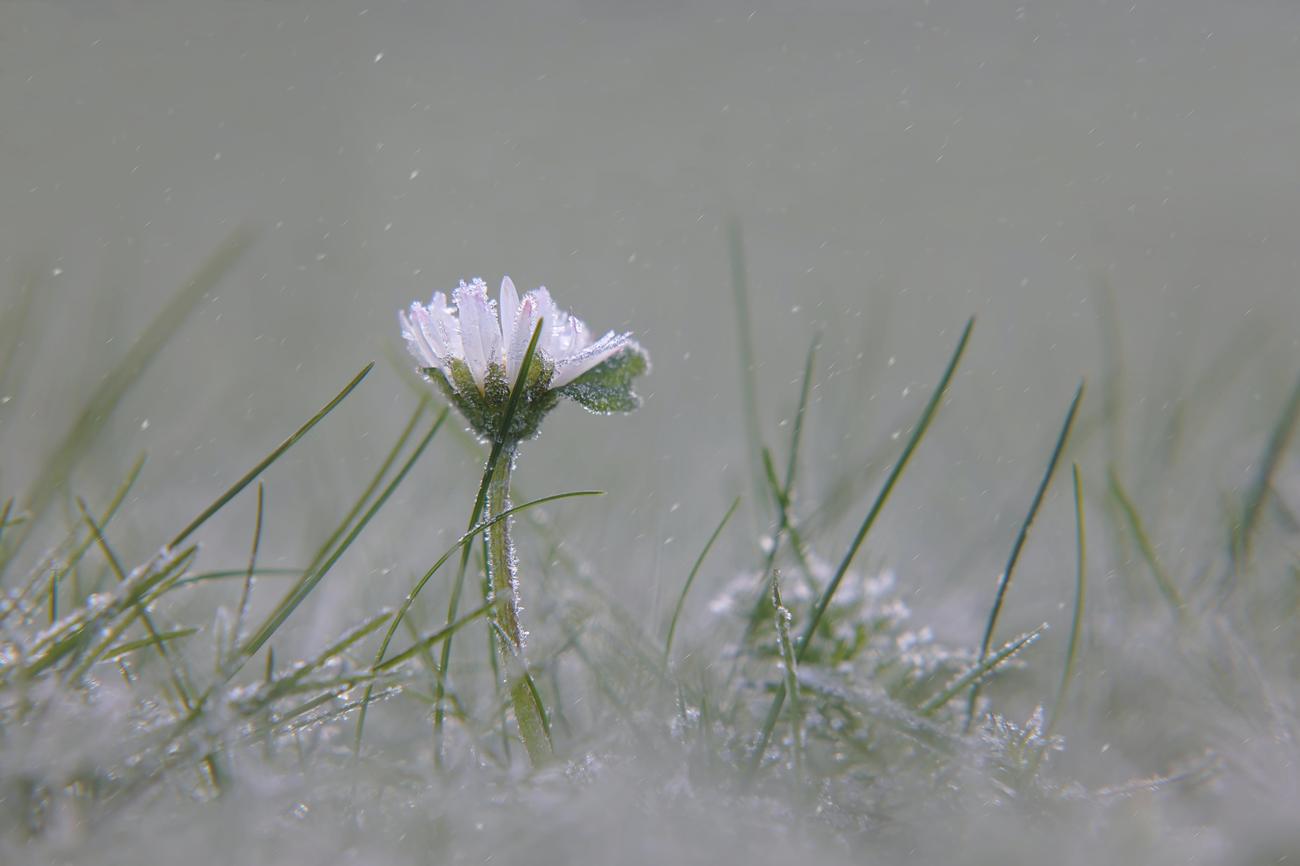Get ready to delve into the captivating world of blossoms with our article, [“Fascinating Flower Facts: Unveiling the Intriguing World of Blossoms”]. In this edition of [Scientific Facts About Flowers 9. Veggie Bloom], we will explore the enchanting and mysterious aspects of flower color changing. As an esteemed horticulturist with a deep understanding of plant life and a passion for sharing knowledge, I will take you on a journey through the intricate factors that influence these mesmerizing transformations. Whether it’s the environment or genetics, we will uncover the secrets behind this captivating phenomenon and shed light on the scientific marvels that occur within the vibrant petals. Join me as we unveil the hidden wonders of the mesmerizing world of flowers.

[Fact about flower]: The Intriguing Mechanism of Flower Color Change
Flowers have always fascinated us with their vibrant hues and captivating beauty. But did you know that many flowers have the ability to change their color, adding an extra layer of enchantment to their already stunning appearance? This extraordinary phenomenon, known as flower color change, is a captivating aspect of plant life that unlocks a world of intrigue and wonder. In this article, we will delve into the captivating world of flower color change, exploring the factors that influence this mesmerizing transformation and uncovering the secrets behind this captivating process. So, buckle up and get ready to be amazed as we explore the fascinating realm of flower color change!
Flower Color Change: A Living Canvas
Imagine a flower as a living canvas, capable of adjusting its shades, just like an artist adding brush strokes to a masterpiece. Flower color change is the result of intricate biochemical processes within the petals, orchestrated by the plant’s genes and the surrounding environment. This remarkable ability allows flowers to adapt and respond to their surroundings, captivating not only our eyes but also the pollinators they aim to attract.
The Role of Environmental Factors
One of the key influencers of flower color change is the environment in which the plant thrives. The intensity of sunlight, temperature fluctuations, and the composition of the soil all play a crucial role in the transformation of flower colors. These environmental cues trigger genetic responses within the plant, leading to alterations in pigmentation and ultimately resulting in a mesmerizing display of hues.
Genetics: Unveiling Nature’s Palette
While environmental factors play a significant role, genetics also holds the key to the intriguing process of flower color change. The plant’s genetic makeup determines the availability and production of specific pigments within the petals. These pigments, such as anthocyanins and carotenoids, are responsible for the diverse spectrum of colors displayed by flowers. Through genetic variations and mutations, plants can create a breathtaking array of shades and patterns, showcasing the wonders of natural selection at play.
A Symphony of Chemical Signals
Flower color change is not solely a visual spectacle; it also involves a symphony of chemical signals that communicate with pollinators. As flowers transition through hues, they emit scents, release nectar, and even produce specific patterns of ultraviolet light invisible to the human eye. These cues serve as a language to attract specific pollinators, forging a vital alliance for successful reproduction. From bees and butterflies to birds and bats, the intricate dance of color change entices a diverse range of pollinators, ensuring the continuation of these mesmerizing blooms.
Cultivating Appreciation: Unlocking the Secrets of Flower Color Change
The world of flower color change is brimming with wonder and mystery. By delving into the intricate mechanisms and factors that contribute to this captivating phenomenon, we can deepen our appreciation for the incredible beauty of flowers. From the interplay between genetics and the environment to the mesmerizing chemical language whispered to pollinators, flower color change unveils the hidden depths of nature’s creativity, leaving us in awe of the botanical world that surrounds us.
Key Takeaway:
Flower color change is a fascinating aspect of plant life, driven by a delicate interplay of genetics and the environment. Through these captivating transformations, flowers communicate with pollinators, adapt to their surroundings, and create breathtaking displays of color. By unveiling the secrets of flower color change, we gain a deeper understanding and appreciation for the enchanting world of blossoms. So next time you gaze upon a flower, take a moment to marvel at the wondrous process that unfolds before your eyes, and let its vivid hues ignite your curiosity for the mysteries of nature.
Fact about Flower
Flowers have always held a special place in our hearts, captivating us with their beauty and fragrance. But did you know that there are specific days dedicated to celebrating certain flowers? One such day is National Flower Day. Have you ever wondered when is National Flower Day? Well, here’s your answer! Click here to find out more about when National Flower Day is celebrated: when is national flower day.
Now, let’s talk about daisy flowers. Daisy flowers are known for their simplicity and charm. They symbolize innocence, love, and purity. If you want to know more fascinating facts about daisy flowers, click here: daisy flower.
Flowers are not just beautiful to look at; they also have a rich history and carry profound meanings. Whether you’re a flower enthusiast or simply curious about the wonders of nature, these links will surely pique your interest. Click away and indulge in the realm of flowers!
Scientific Facts About Flowers
Flowers may seem delicate and enchanting, but they are far more than just beautiful decorations in nature. As an accomplished horticulturist with a passion for understanding the complexities of plant life, I am here to unveil the intriguing scientific facts about flowers. Let’s delve into the fascinating world of blossoms together and discover the wonders they hold.
Flowers: Nature’s Masters of Photosynthesis
One of the most remarkable scientific facts about flowers lies in their ability to harness sunlight, water, and minerals from the soil to create food through a process called photosynthesis. In this astonishing feat of nature, flowers utilize their green pigment, chlorophyll, to convert sunlight into energy. Through this transformative process, flowers not only sustain themselves but also contribute to the overall ecosystem by releasing oxygen as a byproduct.
Flower Fact: Flowers get their food from sunlight, water, and minerals in the soil.
The Reproductive Marvels of Flowers
Beyond their photosynthetic prowess, flowers serve as the reproductive organs of plants. These exquisite floral structures have developed intricate adaptations to ensure successful pollination, the transfer of pollen from one flower to another. When insects or birds come to sip nectar from a flower, they unwittingly become agents of pollination, carrying pollen from the stamen (the male part of the flower) to the pistil (the female part of the flower). This essential interaction allows flowers to reproduce and produce seeds, ensuring the continuity of plant life.
Flower Fact: Flowers are the reproductive parts of a plant.
A Colorful Kaleidoscope
One cannot help but be enchanted by the kaleidoscope of colors displayed by flowers, captivating us with their ethereal beauty. While the ability for flower color change may not be a surprising scientific fact, the underlying mechanisms that orchestrate this transformation are truly mesmerizing. The genes of a flower and its surrounding environment play a vital role in determining its color. This intricate interplay of genetic expression and environmental factors such as sunlight, temperature, and soil composition gives rise to the astonishing variety of hues present in the floral realm.
Flower Fact: Flower color change is the result of intricate biochemical processes orchestrated by the plant’s genes and the surrounding environment.
The Grandeur of Gigantic Blossoms
Prepare to be astonished by the sheer size of the largest flower in the world. Growing up to ten feet tall, three feet wide, and weighing up to 24 pounds, the giant flowers of specific plant species command attention wherever they bloom. These botanical marvels, such as the Rafflesia arnoldii, astound us with their colossal presence, captivating our imagination and showcasing the infinite diversity of flowers.
Flower Fact: The largest flower in the world can be up to ten feet tall, three feet wide, and weigh up to 24 pounds.
To truly grasp the enigmatic allure of flowers, we must appreciate the delicate dance between biology and aesthetics, genetics and environment, functionality and beauty. These scientific facts about flowers demonstrate the depth and complexity of nature’s creations, inviting us to marvel at their wonders and fostering a deeper appreciation for the enchanting world of blossoms.
Flower Fact: Flower color change, besides being visually captivating, involves chemical signals that serve as a language to attract pollinators.
So, join me on this exploration of scientific facts about flowers as we unravel the mysteries hidden within these mesmerizing botanical marvels. Together, let’s delve deeper into the awe-inspiring world of blossoms and cultivate a newfound admiration for the captivating realm of flowers.
9. Veggie Bloom
Have you ever thought about the fact that some of the vegetables we enjoy actually bloom into beautiful flowers? It’s a fascinating aspect of nature that often goes unnoticed. We typically think of flowers as separate from our vegetable gardens, but the truth is, some vegetables are actually flowering plants too.
Broccoli is one such example. Before it reaches our plates, broccoli is an immature flower that is harvested before it has a chance to bloom. This vibrant green vegetable is part of the flowering plant family known as Brassica oleracea, which originated in Italy over 2,000 years ago.
But broccoli is not the only vegetable that goes through this incredible transformation. Lettuces, cauliflower, artichokes, and even saffron are all examples of flowering vegetables. These plants all have flowers that ultimately produce gametes, which are essential for reproduction.
Flower vegetables, like their more recognizable counterparts, rely on pollination for reproduction. The flowers attract pollinators using color, scent, and other chemical signals, just like any other flower. However, instead of producing seeds and fruit, these flowers produce the edible parts of the plant that we enjoy.
Just as soil type determines the color of hydrangeas, the process of flowering in vegetable plants is influenced by various factors. Environmental conditions, such as sunlight, temperature, and soil composition, play a crucial role in the blooming process.
Soil quality, in particular, has a significant impact on the growth and development of flowering vegetables. Just like with hydrangeas, acidic soil can produce blue flowers in some varieties, while alkaline soil can lead to pink flowers. Understanding the specific needs of each flowering vegetable can help us create the right conditions for a successful bloom.
In summary, the world of flowering plants goes beyond what meets the eye. While we often associate flowers with ornamental plants, vegetables like broccoli, cauliflower, artichoke, and saffron are part of this captivating world too. Understanding the fascinating process that transforms these vegetables into blooming flowers can deepen our appreciation for the beauty and complexity of nature.
Key Takeaway: Flowering vegetables, such as broccoli, cauliflower, artichoke, and saffron, are part of the captivating world of flowering plants. They rely on pollination for reproduction, just like any other flower. Factors like soil type and environmental conditions play a crucial role in their blooming process.
Now that we’ve uncovered the intriguing world of vegetable blooms, let’s explore more captivating flower facts in the following sections. Every flower has a story to tell, and through our journey, we’ll uncover the wondrous beauty and secrets held within each petal. But first, let’s delve into the enchanting realm of flower communication in the next section.
Fun Facts About Flowers
[youtube v=”CPgS3aPqdbs”]
Flower color change is a captivating phenomenon in which flowers have the ability to change their color. This ability is the result of intricate biochemical processes orchestrated by the plant’s genes and the surrounding environment. Environmental factors such as sunlight, temperature, and soil composition play a crucial role in flower color change.
Genetics also play a role in determining the availability and production of specific pigments within flower petals. Flower color change is not just a visual spectacle, but also involves chemical signals that serve as a language to attract pollinators. It is a fascinating aspect of nature that deepens our appreciation for the beauty and creativity of flowers.
Flowers use photosynthesis to convert sunlight, water, and minerals into food. They are the reproductive parts of a plant and rely on pollination for reproduction. Flower color change is a result of both genetics and environmental factors. Understanding the specific needs of each flowering plant can help create the right conditions for a successful bloom.
Did you know that the largest flower in the world can grow up to ten feet tall, three feet wide, and weigh up to 24 pounds? It’s truly a remarkable sight to behold. And did you know that some vegetables, such as broccoli, lettuce, cauliflower, artichoke, and saffron, are actually flowering plants? They rely on pollination for reproduction, just like any other flower.
Factors like soil type, sunlight, temperature, and soil composition play a crucial role in the blooming process of flowering vegetables. By understanding their specific needs, we can create the right conditions for a successful bloom. It’s fascinating to think that the vegetables we enjoy as food are actually the edible parts of the plant, rather than seeds and fruit.
Appreciating the beauty and complexity of nature can be deepened by understanding the fascinating process of vegetables transforming into blooming flowers.
“Flower color change is a captivating phenomenon in which flowers have the ability to change their color.”
“Flowers are the reproductive parts of a plant and rely on pollination for reproduction.”
“Did you know that the largest flower in the world can grow up to ten feet tall, three feet wide, and weigh up to 24 pounds?”
“Some vegetables, such as broccoli, lettuce, cauliflower, artichoke, and saffron, are actually flowering plants.”
“Factors like soil type, sunlight, temperature, and soil composition play a crucial role in the blooming process of flowering vegetables.”
“Appreciating the beauty and complexity of nature can be deepened by understanding the fascinating process of vegetables transforming into blooming flowers.”

FAQ
Question 1
What are the essential factors that flowers require to obtain their food?
Answer 1
Flowers obtain their food through a process called photosynthesis, which involves using sunlight, water, and minerals from the soil.
Question 2
What is the purpose of flowers in plants?
Answer 2
Flowers serve as the reproductive parts of plants and enable them to produce offspring through pollination and seed formation.
Question 3
Can you provide some examples of flowering vegetables?
Answer 3
Examples of flowering vegetables include broccoli, cauliflower, artichoke, and saffron.
Question 4
Do flower colors change based on the type of soil they are grown in?
Answer 4
Yes, the color of certain flowers, such as hydrangeas, can be influenced by the acidity or alkalinity of the soil. Acidic soil produces blue flowers, while alkaline soil produces pink flowers.
Question 5
What are some interesting facts about the world of flowers?
Answer 5
Some fascinating facts about flowers include the presence of the world’s largest flower, which can reach up to ten feet tall and weigh up to 24 pounds, and the discovery of the world’s oldest flower, Archaefructus Sinensis, which bloomed around 125 million years ago in China.
- Unveiling Bernhard Caesar Einstein’s Scientific Achievements: A Legacy in Engineering - July 15, 2025
- Uncover who is Jerry McSorley: CEO, Family Man, Business Success Story - July 15, 2025
- Discover Bernhard Caesar Einstein’s Scientific Contributions: Unveiling a Legacy Beyond Einstein - July 15, 2025















